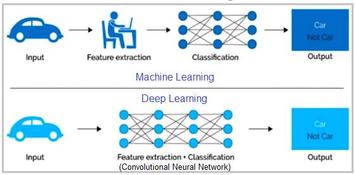
10 Advantages and Disadvantages of Infrared Sensors
Explore 10 advantages and disadvantages of infrared sensor including its benefits like motion detection, heat measurement and drawbacks such as obstructions and range.
Showing 25 posts (Page 1 of 28)
Advertisement

Explore 10 advantages and disadvantages of infrared sensor including its benefits like motion detection, heat measurement and drawbacks such as obstructions and range.
Explore 10 key advantages and disadvantages of modern technology from smartphones to virtual reality.

Explore 10 advantages and disadvantages of Radio Broadcasting.It mentions benefits or advantages of radio broadcasting and drawbacks or disadvantages of radio broadcasting.

Explore 10 Advantages and disadvantages of robots in robotics industry including advantages of robots and disadvantages of robots.
Explore 10 advantages and disadvantages of visual communication.Learn how it enhances understanding while facing limitations in interpretation and context.

Learn functions and uses of joystick in computer including 5 to 10 advantages and disadvantages of joystick.

Explore 10 advantages and disadvantages of Chat GPT and its features.It mentions benefits or advantages of ChatGPT and drawbacks or disadvantages of ChatGPT.
Explore 5-10 advantages and disadvantages of fitness trackers including benefits like accuracy, cost, convenience & drawbacks like battery life etc.

Explore 5-10 advantages and disadvantages of solar cell, including working principles, efficiency, and factors affecting their performance as a renewable energy source.

Explore 10 difference between Li-Fi and Wi-Fi technologies with respect to speed, coverage, applications and security.Learn advantages and disadvantages of LiFi and WiFi.

Explore 10 pros and cons of data science, including informed decisions, improved efficiency, privacy concerns, and data quality issues in today's data-centric world.

Understand the differences between 2-wire and 4-wire circuits in telephone systems, including their applications and the role of hybrid transformers.
Explore 3.6 GHz commercial radio and 6 GHz concept radio and differences between them.

Explore advantages and disadvantages of 3D hologram technology used as holographic data storage.

Explore the uses and benefits of 3D holograms across various industries, from education and healthcare to entertainment and security. Discover how this immersive technology is transforming visualization and interaction.

Explore 5 advantages and disadvantages of CBCT scan, including benefits like scan time, radiation exposure image quality, and limitations like soft tissue visualization.

Explore 5 key advantages and disadvantages of concealed wiring, a method where electrical wires are hidden within walls for aesthetic and safety reasons.

Explore 5 key advantages and disadvantages of deep learning, a subset of machine learning, including its benefits, drawbacks and applications.

Explore about 5 to 10 key advantages and disadvantages of e-books and its basics.

Explore 5 key advantages and disadvantages of GUI (Graphical User Interface) including usability, resource usage and efficiency.

Explore 5 key advantages and disadvantages of OCR technology including benefits like automation and accessibility and drawbacks such as accuracy and cost.

Explore 5 advantages and disadvantages of OLED display technology, including vibrant colors & energy efficiency benefits and limitations such as lifespan and burn-in potential.

Explore 5 key advantages and disadvantages of sodium-ion battery including its benefits like lower cost, material availability and drawbacks like low energy density.

Explore 5 key advantages and disadvantages of XML covering its benefits for data transport and storage versus its inefficiencies and limitations.
Explore types of energy like mechanical, thermal, electrical, chemical, nuclear, electromagnetic, sound and gravitational.Mention atleast 5 examples of energy types.
Advertisement